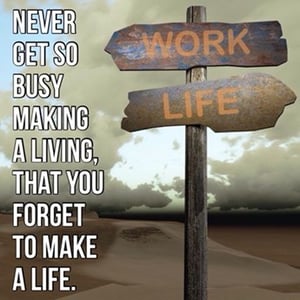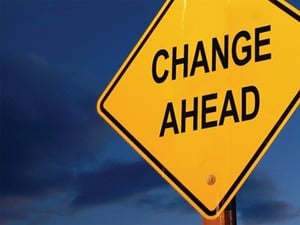Change Management
In today's workplaces, change is frequent and can be difficult for some to navigate. Better understanding how change affects us and how to make the transition smoother can help ease the stress and anxiety that often accompany changes large and small.
Change and transition are not the same thing. Change is the event or situation. Transition is the process people move through to accommodate the change. Change is often externally imposed, but the transition—how we choose to think about the change—is internal. In most cases, we have little control over the change event, but we have far more control in our transition process. Understanding what makes change difficult for us will help create the awareness necessary to make our personal transition as smooth as possible.
In order to manage change as effectively as possible, it is important to note what your "change style" is. Think for yourself, which of the following change styles is closest to how you react to change:
- I anticipate and prepare for change early--I am eager for change;
- I go into action immediately after a change--I am rarely upset by change;
- I don't want to change, I often fee "It's not fair!" and dig my heels in;
- I am upset by change, but then I adapt and flow with the transition
Now answer this question—is that change style working for you? Are you getting the results you want, are you coping in the way you want when you react that way? If not, it is time to look more closely at other ways to cope with change and transition.
It is also helpful to reflect upon your typical first response (thoughts, feelings, actions, etc.) when facing change. Talking about the change and how you are feeling about it can help you cope and manage your own transition, while supporting others in your organization through theirs.
 Stage 1—What is Ending?
Stage 1—What is Ending?
Understanding Change in Your Work Environment
We can't look at change as a snapshot – we have to address it as a process and in order to manage the change and transition in our best way, we should be thoughtful about what is happening at each stage. We all have emotional investments in our work environment and in the way we do things, and when things change it can be painful and disruptive because it marks the end of the ways of doing things. We have to take the time to notice what is ending and what about that ending is impacting us. Does the change involve someone leaving? Someone new starting? A significant process changing? What is challenging is not the change itself, but our reactions and the process of adjusting to change. In the workplace, we usually are not in a position to control or choose the change, but we can choose our response to it. Rather than simply "moving on" it is important to seek closure on what is ending before moving to a new beginning.
In order to do that, it can be helpful to ask yourself the following questions:
- Identify, for you, the most significant aspect of the recent change(s)?
- What impact did this change have on you? On your department?
- What made this change difficult to accept or manage for you and for others? What about it was the most difficult?
- What has helped you cope and manage during the changes? These questions provide an opportunity to determine what is needed for closure, which allows you to truly "move on."
 Stage 2—The Neutral Zone:
Stage 2—The Neutral Zone:
Negotiating the Transition Process
Stage Two, or the neutral zone, is the transitional stage between the past and the future; from the old way to the new way. This is typically the hardest part because we are often thrust into the unknown, face ambiguous situations and unanswered questions.
Understanding the "why" behind your reactions to change can help you choose how to proceed through your personal transition. Permanence and Pervasiveness are the two crucial dimensions to understanding your "why."
Permanence:
All of us experience change in our personal and working lives, but we don't all perceive change in the same way. Some of us perceive change pessimistically, as a permanent state. Others perceive change more optimistically, as a temporary state. We know that most change events do not last forever; however, we often view change in a way that reflects permanence. If we say to ourselves "this will never work" or "we will never recover from this reorganization" we are viewing the change pessimistically, as a permanent, negative fixture in our lives. Over time, permanence can impact our desire/ability to make positive choices throughout the transition process. It is fine and even natural to think about change negatively, but the key to a successful transition is to see the negatives as temporary. The more temporary our negative thinking, the more quickly we will acclimate to the change.
Pervasiveness:
Some of us are able to put change in perspective, while others allow the change to spill over into everything. Pervasiveness determines how many areas of our life will be affected when we experience setbacks, such as workplace change. When we perceive change pessimistically we see the setback as far-reaching; that everything in our lives will suffer because of it. On the other hand, when we perceive change optimistically we see the setback as impacting one specific area of our life. The less pervasive we are able to view change the more apt we are to view the change as a "bump in the road" rather than "a road full of bumps."
 Stage 3—New Beginning: Your Transition Process – Your Choices
Stage 3—New Beginning: Your Transition Process – Your Choices
As we've been discussing, the distinction between change and transition is a subtle, but very useful one. Change is the event itself. It's the cancellation of a project, a merger, a name change, a new computer system, re-organization, the departure of a key manager/leader.
Transition is the process of managing our personal response to the change event. Stage Three is the new beginning stage where the transition process offers us many choices – what to think, what to say, what to do. In managing a transition, your manager/leader can help – but only to a point. Ultimately, successful transition comes down to the individual employee. We are each responsible for moving our own thinking and behavior from emotional reactions to productive responses. Transition is really about taking personal responsibility for our behaviors and attitudes towards the change event. It can be helpful for individuals and groups going through a transition, to develop strategies, recommendations, and/or action steps (including communication) that would assist in the transition process for the current workplace change.
Think about what would be helpful at each of the three stages (i.e., ending, neutral zone, and beginning) to help everyone move through each stage more effectively. Think about things like resources that would be helpful, outside people or stakeholders that should be involved, what kinds of communication would aid in the process, how many meetings are needed, etc. Be as specific as possible when planning before the change and during the transition process, so you and others, have a road map to follow. Along that road, each individual gets to make decisions about how they react to the change, how they compromise and function within the new parameters of the change, and ultimately if they are going to be on board.
Remember, each person will experience the same change event in his or her own way. There are no good or bad emotions with change. You feel the way you feel. It's very difficult to control your initial emotions around change; however, you can control the choices you make as you transition from the old way to the new way.
We Can Help
For more information about our Employee Assistance Program, contact us online or at 800.383.1908. We can offer a variety of consulting or training solutions to support your organization with change management and organizational culture.


